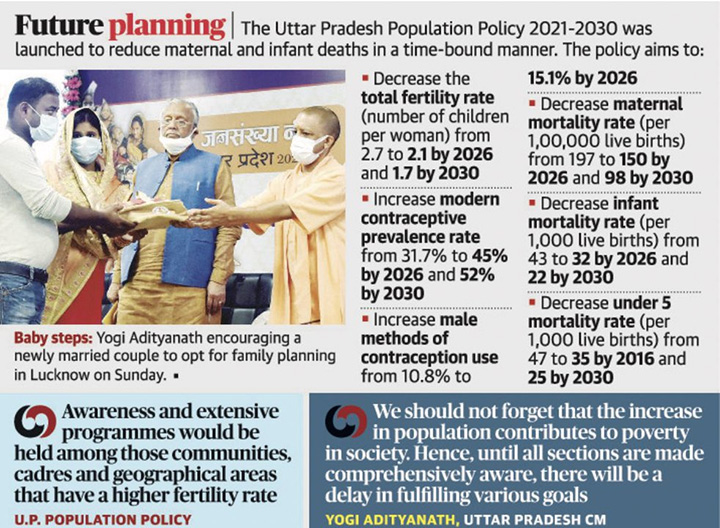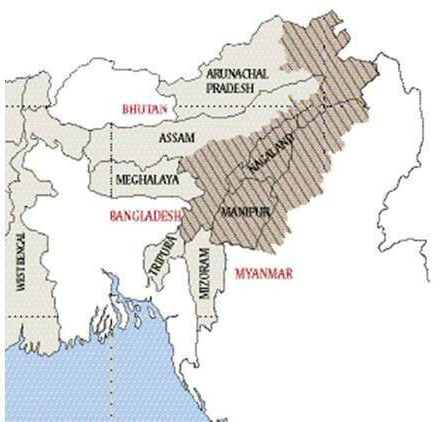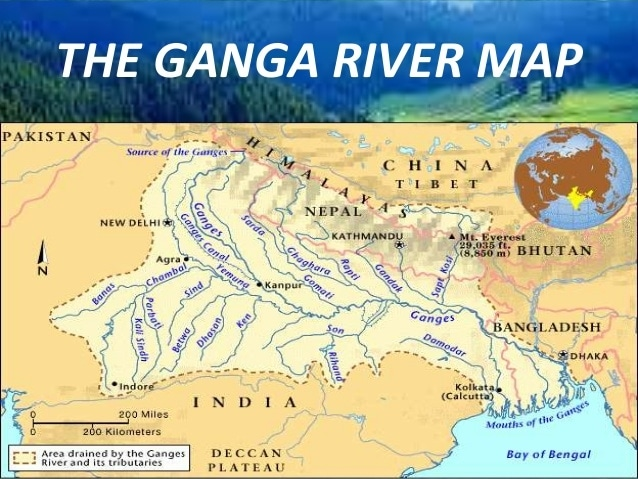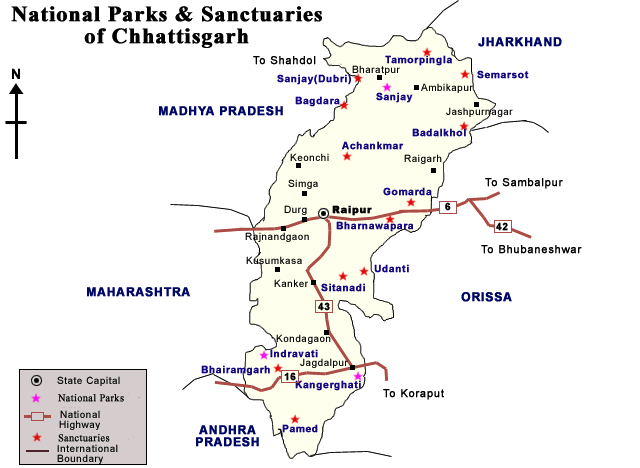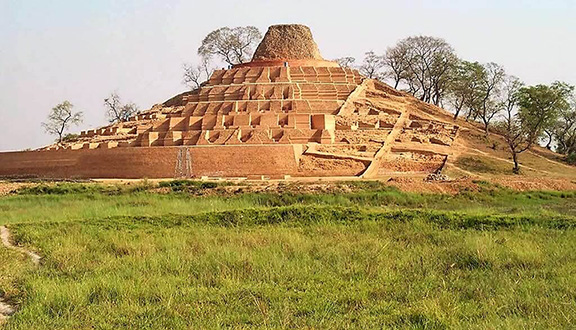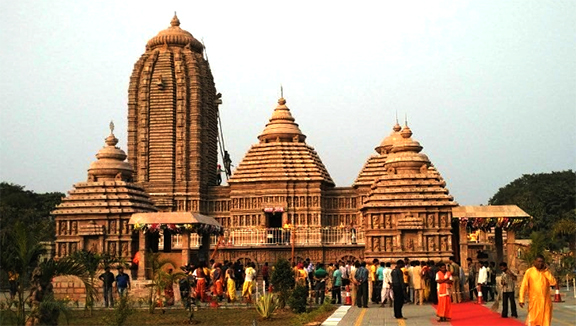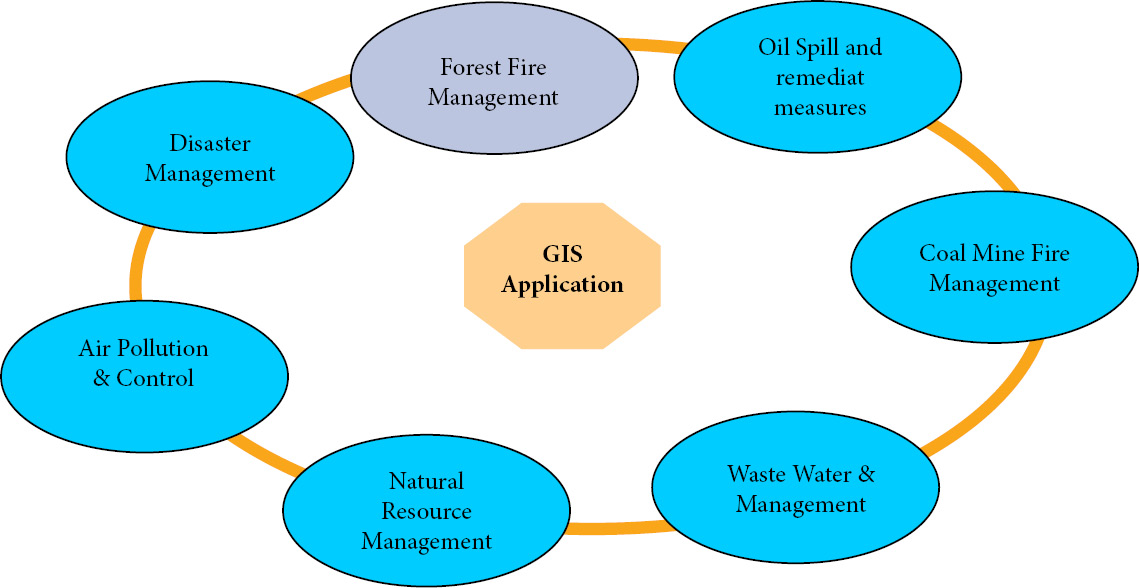Indian Society
World Population Day
Why in News
Recently, Uttar Pradesh (UP) unveiled its New Population Policy 2021-30, on the occasion of World Population Day (11th July).
Key Points
- About:
- In 1989, the United Nations Development Programme (UNDP) recommended that 11th July be observed by the international community as World Population Day, a day to focus attention on the urgency and importance of population issues.
- UNDP was inspired by the public interest and awareness that was created by "Five Billion Day" on 11th July 1987 when the world's population reached 5 billion.
- A resolution to the effect was passed, and the day was first marked on 11th July, 1990.
- The United Nations Population Fund (UNFPA) was created in 1969, the same year the United Nations General Assembly declared “parents have the exclusive right to determine freely and responsibly the number and spacing of their children.
- Theme 2021: Rights and Choices are the Answer: Whether baby boom or bust, the solution to shifting fertility rates lies in prioritising all people’s reproductive health and rights.
- U.P’s New Population Policy:
- The policy proposes five key targets: population control; ending curable maternal mortality and illnesses; ending curable infant mortality and ensuring betterment in their nutrition status; betterment of sexual and reproductive health-related information and facilities among the youth; and care of elders.
- The UP government's law commission has also prepared a population control bill, under which a two-child norm will be implemented and promoted.
- As per the draft, violation of the policy is penalised with measures such as barring for elections and abidance is rewarded with measures such as promotion in jobs, subsidy etc.
Population Trends & Issues
- World Population:
- About:
- World's population stands at about 7.7 billion, and it's expected to grow to around 8.5 billion in 2030, 9.7 billion in 2050, and 10.9 billion in 2100.
- Reason for Growth:
- This dramatic growth has been driven largely by increasing numbers of people surviving to reproductive age, and has been accompanied by major changes in fertility rates, increasing urbanization and accelerating migration.
- These trends will have far-reaching implications for generations to come.
- This dramatic growth has been driven largely by increasing numbers of people surviving to reproductive age, and has been accompanied by major changes in fertility rates, increasing urbanization and accelerating migration.
- Affected Areas:
- They affect economic development, employment, income distribution, poverty and social protections.
- They also affect efforts to ensure universal access to health care, education, housing, sanitation, water, food and energy.
- About:
- India’s Population Related Issues:
- Large Size:
- India has just 2% of the world’s landmass and 16% of the global population.
- It has been reported that India will soon surpass China’s population (Country with largest population).
- Fast Growth:
- Mismatch in birth and death rate resulted in faster growth of population in the past few decades.
- However, India’s Total Fertility Rate (TFR) is declining. It is now 2.2 per woman, nearing the replacement rate of 2.1, according to the latest government data.
- TFR indicates the average number of children expected to be born to a woman during her reproductive span of 15-49 years.
- Mismatch in birth and death rate resulted in faster growth of population in the past few decades.
- Education and Population Growth:
- Poverty and illiteracy contribute immensely to the population explosion.
- Recent data shows that the overall literacy rate in the country is about 77.7%.
- At the all-India level, the male literacy rate is higher at 84.7% compared to 70.3% among women.
- Children in rural areas are considered as assets, who will take care of parents at old age, also more children mean more earnings.
- The level of female education has a direct impact on fertility, as it is evidenced that the fertility rate of illiterate women tends to be higher than those who are literate.
- Lack of education prevents women from having full knowledge about the use of contraceptives, of the consequences of frequent childbirth.
- Poverty and illiteracy contribute immensely to the population explosion.
- Unemployment:
- High youth unemployment in India is turning demographic dividend into a demographic disaster for India.
- This youth potential is often referred to as the ‘demographic dividend’ which means that if the youth available in the country are equipped with quality education and skills training, then they will not only get suitable employment but can also contribute effectively towards the economic development of the country.
- Large Size:
Way Forward
- Family planning is an effective tool to ensure a stable rise in the population. The government at all levels- Union, State and Local, citizens, civil societies as well as the businesses must take the onus to promote awareness and advocate the sexual and reproductive rights of women and encourage the use of contraception.
- There is a need for well-researched planning and implementation on how to harness the population growth for the maximum economic benefit of the society and country.
- In order to have a better future for all on a healthy planet, attainment of the Sustainable Development Goals (SDGs) related to poverty, gender equality, economic growth among others is critical.
Internal Security
Naga Peace Talks
Why in News
Recently, the Nagaland Government appealed to all Naga political groups and extremist groups to cooperate in establishing unity, reconciliation and peace in the region.
- The peace process between the central government and two sets of the Naga extremist groups has been delaying for more than 23 years.
Nagas
- Nagas are a hill people who are estimated to number about 2.5 million (1.8 million in Nagaland, 0.6 million in Manipur and 0.1 million in Arunachal states) and living in the remote and mountainous country between the Indian state of Assam and Burma.
- There are also Naga groups in Burma.
- The Nagas are not a single tribe, but an ethnic community that comprises several tribes who live in the state of Nagaland and its neighbourhood.
- Nagas belong to the Indo-Mongoloid Family.
- There are nineteen major Naga tribes, namely, Aos, Angamis, Changs, Chakesang, Kabuis, Kacharis, Khain-Mangas, Konyaks, Kukis, Lothas (Lothas), Maos, Mikirs, Phoms, Rengmas, Sangtams, Semas, Tankhuls, Yamchumgar and Zeeliang.
Key Points
- Background of Naga Insurgency:

- The Naga Hills became part of British India in 1881.
- The effort to bring scattered Naga tribes together resulted in the formation of the Naga Club in 1918.
- The club aroused a sense of Naga nationalism.
- The club metamorphosed into the Naga National Council (NNC) in 1946.
- Under the leadership of Angami Zapu Phizo, the NNC declared Nagaland as an independent State on 14th August, 1947, and conducted a “referendum” in May 1951 to claim that 99.9% of the Nagas supported a “sovereign Nagaland”.
- Nagaland achieved statehood in December 1963. Nagaland was formed out of the Naga Hills district of Assam and the then North East Frontier Agency (NEFA) province (now Arunachal Pradesh).
- In 1975, under the Shillong Accord, some factions of NNC and NFG (Naga Federal Government) agreed to give up arms.
- A group of about 140 members led by Thuingaleng Muivah, who was at that time in China, refused to accept the Shillong Accord and formed the National Socialist Council of Nagaland (NSCN) in 1980.
- In 1988, the NSCN split into NSCN (IM) and NSCN (K) after a violent clash.
- While the NNC began to fade away, and Phizo died in London in 1991, the NSCN (IM) came to be seen as the “mother of all insurgencies” in the region.
- Demands of Naga Groups:
- The key demand of Naga groups has been a Greater Nagalim (sovereign statehood) i.e redrawing of boundaries to bring all Naga-inhabited areas in the Northeast under one administrative umbrella.
- It includes various parts of Arunachal Pradesh, Manipur, Assam and Myanmar as well.
- The demand also includes the separate Naga Yezabo (Constitution) and Naga national flag.
- The key demand of Naga groups has been a Greater Nagalim (sovereign statehood) i.e redrawing of boundaries to bring all Naga-inhabited areas in the Northeast under one administrative umbrella.
- Peace Initiatives:
- Shillong Accord (1975): A peace accord was signed in Shillong in which the NNC leadership agreed to give up arms.
- However, several leaders refused to accept the agreement, which led to the split of NNC.
- Ceasefire Agreement (1997): The NSCN-IM signed a ceasefire agreement with the government to stop attacks on Indian armed forces. In return, the government would stop all counter-insurgency offensive operations.
- Framework Agreement (2015): In this agreement, the Government of India recognised the unique history, culture and position of the Nagas and their sentiments and aspirations.
- Recently, the State government decided to prepare the Register of Indigenous Inhabitants of Nagaland but later due to pressure from various fractions, the decision was put on hold.
- Shillong Accord (1975): A peace accord was signed in Shillong in which the NNC leadership agreed to give up arms.
- Issues:
- The 2015 agreement apparently made the peace process inclusive but it created suspicion about the central government exploiting divisions within the Nagas on tribal and geopolitical lines.
- The issue of integration of contiguous Naga-inhabited areas of Manipur, Assam and Arunachal Pradesh in view of the demand for territorial unification of ‘Greater Nagalim’ will trigger violent clashes in the different affected states.
- Another major hindrance to the peace process in Nagaland is the existence of more than one organisation, each claiming to be representative of the Nagas.
Way Forward
- The Centre must negotiate with all the factions and groups of the Insurgents to have a long-lasting peace. Further, their cultural, historical and territorial extent must be taken into consideration.
- Any arrangement to be worked out should lead to social and political harmony, economic prosperity and protection of the life and property of all tribes and citizens of the states.
- Another way of dealing with the issue can be maximum decentralisation of powers to the tribal heads and minimum centralisation at the apex level, which should mainly work towards facilitating governance and undertaking large development projects.
- Greater autonomy for the Naga inhabited areas in these states can be provided which would encompass separate budget allocations for the Naga inhabited areas with regard to their culture and development issues.
- Moreover, the Centre must keep in mind that most of the armed insurgencies across the world do not end in either total victory or comprehensive defeat, but in a grey zone called ‘compromise’.
Indian Polity
Election of Speaker and Deputy Speaker
Why in News
Maharashtra has been without a Speaker since February, 2021 while Lok Sabha and several State Assemblies are without a Deputy Speaker.
- The Constitution provides that the office of the Speaker should never be empty.
Key Points
- Election of Speaker:
- Criteria:
- The Constitution of India requires the Speaker to be a member of the House.
- Although there are no specific qualifications prescribed for being elected the Speaker, an understanding of the Constitution and the laws of the country is considered a major asset for the holder of the Office of the Speaker.
- Usually, a member belonging to the ruling party is elected Speaker. The process has evolved over the years where the ruling party nominates its candidate after informal consultations with leaders of other parties and groups in the House.
- This convention ensures that once elected, the Speaker enjoys the respect of all sections of the House.
- Voting: The Speaker (along with the Deputy Speaker) is elected from among the Lok Sabha members by a simple majority of members present and voting in the House.
- Once a decision on the candidate is taken, his/her name is normally proposed by the Prime Minister or the Minister of Parliamentary Affairs.
- Term of Office of the Speaker: The Speaker holds Office from the date of his/her election till immediately before the first meeting of the next Lok Sabha (for 5 years).
- The speaker once elected is eligible for re-election.
- Whenever the Lok Sabha is dissolved, the Speaker does not vacate his office and continues till the newly-elected Lok Sabha meets.
- Criteria:
- Role and Powers of Speaker:
- Interpretation: He/She is the final interpreter of the provisions of the Constitution of India, the Rules of Procedure and Conduct of Business of Lok Sabha and the parliamentary precedents, within the House.
- Joint Sitting of Both Houses: He/She presides over a joint sitting of the two Houses of Parliament.
- Such a sitting is summoned by the President to settle a deadlock between the two Houses on a bill.
- Adjournment of Sitting: He/She can adjourn the House or suspend the meeting in absence one-tenth of the total strength of the House (called the quorum).
- Casting Vote: The speaker does not vote in the first instance but in the case of a tie; when the House is divided equally on any question, the Speaker is entitled to vote.
- Such a vote is called a Casting Vote, and its purpose is to resolve a deadlock.
- Money Bill: He/She decides whether a bill is a money bill or not and his/her decision on this question is final.
- Disqualifying Members: It is the speaker who decides the questions of disqualification of a member of the Lok Sabha, arising on the ground of defection under the provisions of the Tenth Schedule.
- The 52nd amendment to the Indian Constitution vests this power in the Speaker.
- In 1992, the Supreme Court ruled that the decision of the Speaker in this regard is subject to judicial review.
- Chairing the IPG: He/She acts as the ex-officio chairman of the Indian Parliamentary Group (IPG) which is a link between the Parliament of India and the various parliaments of the world.
- He also acts as the ex-officio chairman of the conference of presiding officers of legislative bodies in the country.
- Constitution of Committees: The Committees of the House are constituted by the speaker and function under the speaker’s overall direction.
- The Chairmen of all Parliamentary Committees are nominated by him/her.
- Committees like the Business Advisory Committee, the General Purposes Committee and the Rules Committee work directly under his Chairmanship.
- Privileges of the House: The Speaker is the guardian of the rights and privileges of the House, its Committees and members.
- Removal of Speaker: Under following conditions, the speaker, may have to vacate the office earlier:
- If he ceases to be a member of the Lok Sabha.
- If he resigns by writing to the Deputy Speaker.
- If he is removed by a resolution passed by a majority of all the members of the Lok Sabha.
- Such a resolution can be moved only after giving 14 days’ advance notice.
- When a resolution for the removal of the Speaker is under consideration of the House, he/she may be present at the sitting but not preside.
- Deputy Speaker of the Lok Sabha:
- Election:
- The Deputy Speaker is also elected by the Lok Sabha from amongst its members right after the election of the Speaker has taken place.
- The date of election of the Deputy Speaker is fixed by the Speaker (date of election of the Speaker is fixed by the President).
- Term of Office and Removal:
- Like the Speaker, the Deputy Speaker remains in office usually during the life of the Lok Sabha (5 years).
- The Deputy Speaker may vacate his/her office earlier in any of the following three cases:
- If he ceases to be a member of the Lok Sabha.
- If he resigns by writing to the Speaker.
- If he is removed by a resolution passed by a majority of all the then members of the Lok Sabha.
- Such a resolution can be moved only after giving 14 days’ advance notice.
- Responsibilities and Powers:
- The Deputy Speaker performs the duties of the Speaker’s office when it is vacant.
- He/She also acts as the Speaker when the latter is absent from the sitting of the House.
- He/She also presides over the joint sitting of both the Houses of Parliament, in case the Speaker is absent from such a sitting.
- The Deputy Speaker has one special privilege, that is, whenever he/she is appointed as a member of a parliamentary committee, he/she automatically becomes its chairman.
- The Deputy Speaker performs the duties of the Speaker’s office when it is vacant.
- Election:
Biodiversity & Environment
Conservation Plans for Cities along Rivers
Why in News
A policy document from National Mission for Clean Ganga (NMCG) has proposed that cities situated on river banks should incorporate river conservation plans when they prepare their Master Plans.
- The recommendations are currently for towns that are on the main stem of the river Ganga which are in five States — Uttarakhand, Uttar Pradesh, Bihar, Jharkhand, West Bengal.
- NMCG is the implementation wing of National Ganga Council (set in 2016; which replaced the National Ganga River Basin Authority (NGRBA)). Along with its state counterpart organizations, NMCG implements the Namami Gange Programme.
Key Points
- Emphasis of the Policy Document:
- On the need for river-sensitive plans that must be practical (as envisaged in the National Water Policy).
- There should be a systematic rehabilitation plan to remove encroachment that emphasizes on alternative livelihood options along with a proper relocation strategy.
- Planners should make every attempt to engage stakeholders (encroacher, land owners) in order to develop empathetic and humane solutions.
- The plan must also clarify on land ownership. Ascertaining the land ownership in these areas is important to avoid legal complications while the Plan is being implemented.
- A key aspect of conserving and protecting river and riverine resources involves increasing green cover in the vicinity of the river by creating green buffers, removing concrete structures and employing “green infrastructure.”
- Significance:
- The Master Plan can “create an environment” for facilitating the use of state-of-the-art technologies for river management.
- These include satellite-based monitoring of water quality; artificial intelligence for riverine biodiversity mapping; big data and citizen science for river-health monitoring; unmanned aerial vehicles (UAV) for floodplain mapping.
- In coming years the nature and type of technologies are expected to become more sophisticated and effective. Thus, the cities will be ready to embrace these seamlessly.
- The Master Plan can “create an environment” for facilitating the use of state-of-the-art technologies for river management.
Key Features of National Water Policy, 2012
- Integrated Water Resources Management: It laid down the concept of an Integrated Water Resources Management approach that took the river basin/sub-basin as a unit for planning, development, and management of water resources.
- Integrated Water Resources Management (IWRM) is a process that promotes the coordinated development and management of water, land and related resources in order to maximize the resultant economic and social welfare in an equitable manner without compromising the sustainability of vital ecosystems.
- Minimum Water Flow: To maintain the minimum flow of a portion of a river to meet ecological needs.
- In 2018, such an approach led the government to require minimum water levels to be maintained in the Ganga throughout the year by refraining from hoarding water beyond a point.
- Emphasis was also made to make a minimum quantity of potable water available to citizens for maintaining essential health and hygiene.
- Inter-basin Transfers: To meet basic human needs and achieve equity and social justice, inter-basin transfers of water need to be considered on the basis of the merits of each case after evaluating the environmental, economic and social impacts of such transfers.
- Other reasons such as decreasing spring sets in Himalayas, budgeting and restructuring of water subsidies, irrigation, etc. demanded the prioritization of water usage.
Biodiversity & Environment
Lemru Elephant Reserve: Chhattisgarh
Why in News
Recently, the Chhattisgarh government has proposed to reduce the area of Lemru Elephant Reserve from 1,995 sq km to 450 sq km.
- The Centre gave its approval in 2007 for the creation of the 450 sq km Lemru Elephant Reserve and in 2019, the state government decided to increase the area to 1,995 sq km.
Key Points
- About:
- The reserve is located in the Korba district of Chhattisgarh.
- The reserve is aiming at reducing human-animal conflict and destruction of property in addition to providing a permanent habitat to the elephants.
- Earlier, the state government notified the reserve (Conservation Reserve) in October 2020 under Section 36A of the Wild Life (Protection) Act, 1972 (WLPA).
- Section 36A has a special provision that gives the Union government a say in the process of notification in case the land to be notified as conservation reserve has areas belonging to the Centre.
- Elephant reserves are not recognised under the WLPA.
- Reason for Reducing Size:
- The area proposed under the reserve is part of the Hasdeo Aranya forests, a very diverse biozone that is also rich in coal deposits.
- Of 22 coal blocks in the area, 7 have already been allotted with mines running in three, and in the process of being established in the other four.
- The biggest challenge in increasing the reserve area was that several coal mines would become unusable.
- Significance of Reserve:
- North Chhattisgarh alone is home to over 240 elephants. More than 150 elephants have died in the state over the last 20 years, including 16 between June and October 2020.
- Elephants in Chhattisgarh are relatively new; they started moving into undivided Madhya Pradesh (MP) in 1990.
- While MP had a policy of pushing back the animals coming from Jharkhand, after Chhattisgarh was formed, the lack of a formal policy allowed elephants to use as a corridor a route in the north and central parts of the state.
- Since these animals were relatively new, human-animal conflict started once elephants started straying into inhabited areas, looking for food.
- Other Protected Areas in Chhattisgarh:
- Achanakmar Tiger Reserve.
- Indravati Tiger Reserve.
- Sitanadi-Udanti Tiger Reserve
- Kanger Valley National Park
- Badalkhol Tamor Pingla Elephant Reserve.
Elephants
- About:
- Elephants are keystone species.
- There are three subspecies of Asian elephant – the Indian, Sumatran, and Sri Lankan.
- The Indian elephant has the widest range and accounts for the majority of the remaining elephants on the continent.
- Conservation Status of Indian Elephants:
- Wildlife Protection Act, 1972: Schedule I
- IUCN Red List: Endangered
- CITES: Appendix I
- India’s Initiatives for Conservation of Elephants:
- Gaj Yatra: A nationwide campaign to protect elephants, was launched on the occasion of World Elephant Day in 2017.
- Project Elephant: It is a centrally sponsored scheme which was launched in 1992.
- Seed Bombs: Recently Odisha’s Athagarh Forest Division has started casting seed balls (or bombs) inside different reserve forest areas to enrich food stock for wild elephants to prevent man-elephant conflict.
- Right of Passage of the Animals: Recently, the Supreme Court (SC) upheld the 2011 order of the Madras High Court (HC) on the Nilgiris elephant corridor, affirming the right of passage of the animals and the closure of resorts in the area.
- International initiatives to conserve Elephants:
- The Monitoring the Illegal Killing of Elephants (MIKE) programme, launched in 2003, is an international collaboration that tracks trends in information related to the illegal killing of elephants from across Africa and Asia, to monitor effectiveness of field conservation efforts.
Social Justice
Acute Encephalitis Syndrome
Why in News
The Jal Jeevan Mission (JJM) has provided tap water supply to more than 97 lakh households in five JE-AES (Japanese Encephalitis-Acute Encephalitis Syndrome) affected states.
- The five states with priority districts are Assam, Bihar, Tamil Nadu, Uttar Pradesh and West Bengal.
- JJM envisages supply of 55 litres of water per person per day to every rural household through Functional Household Tap Connections (FHTC) by 2024. The Jal Shakti Ministry is the nodal ministry for the implementation of the scheme.
Key Points
- Acute Encephalitis Syndrome (AES):
- About: AES is a severe case of encephalitis transmitted by mosquitoes and is characterized by high fever and inflammation of the brain.
- The World Health Organisation (WHO) in 2006, coined the term AES to signify a group of diseases which seem similar to one another but are difficult to differentiate in the chaotic environment of an outbreak.
- Vulnerable Population: The disease most commonly affects children and young adults and can lead to considerable morbidity and mortality.
- Causative Agents: Viruses are the main causative agents in AES cases, although other sources such as bacteria, fungi, parasites, spirochetes, chemicals, toxins, and noninfectious agents have also been reported over the past few decades. It is not vaccine-preventable.
- Japanese Encephalitis virus (JEV) is the major cause of AES in India (ranging from 5%-35%).
- Herpes simplex virus, Nipah virus, Zika virus, Influenza A virus, West Nile virus, Chandipura virus, mumps, measles, dengue, scrub typhus, S.pneumoniae are also found as causative agents for AES.
- Symptoms: Confusion, disorientation, coma, or inability to talk, high fever, vomiting, nausea, and unconsciousness.
- Diagnosis: The National Vector Borne Disease Control Programme (NVBDCP) in India has set up countrywide surveillance for AES through sentinel sites with a focus on detecting Japanese Encephalitis (JEV).
- About: AES is a severe case of encephalitis transmitted by mosquitoes and is characterized by high fever and inflammation of the brain.
- Status of AES in India:
- According to the NVBDCP, 10,485 AES cases were diagnosed in 2018 with 632 deaths across 17 states.
- India records fatality rate at 6% in AES, but the fatality rises to 25% amongst children.
- Bihar, Assam, Jharkhand, Uttar Pradesh, Manipur, Meghalaya, Tamil Nadu, Karnataka, and Tripura are worst affected.
- Government Initiatives: To reduce morbidity and mortality the government of India developed a multi-pronged strategy with the convergence of the concerned ministries.
- Ministry of Health and Family Welfare: Strengthening and expanding JE vaccination, Strengthening of public health activities, Better clinical management of JE/AES Cases etc.
- Ministry of Jal Shakti for the provision of safe water supply.
- Women and Child development for providing high-quality nutrition to vulnerable children.
- Ministry of Social Justice and Empowerment for establishing District Disability Rehabilitation Centers for disability management and rehabilitation.
- Ministry of Housing and Urban Affairs for ensuring the supply of safe water in slums and towns.
- Ministry of Education to provide special facilities for disabled children for their education.
Important Facts For Prelims
Kesaria Buddha Stupa: Bihar
Why in News
The world-famous Kesaria Buddha stupa in east Champaran district of Bihar is waterlogged following floods in some parts of the district.
- The ASI (Archaeological Survey of India) has declared it a protected monument of national importance.
Key Points
- About:
- The stupa is said to be the tallest and the largest Buddhist stupa in the world.
- It is located in Kesariya, at a distance of 110 kilometers from Patna, in the East Champaran district of Bihar.
- It has a circumference of almost 400 feet and stands at a height of about 104 feet.
- History:
- The first construction of the Stupa is dated to the 3rd century BCE. The original Kesaria stupa probably dates to the time of Ashoka (circa 250 BCE), as the remains of a capital of a Pillar of Ashoka were discovered there.
- The current stupa dates to the Gupta Dynasty between 200 AD and 750 AD and may have been associated with the 4th century ruler Raja Chakravarti.
- The stupa mound may even have been inaugurated during the Buddha's time, as it corresponds in many respects to the description of the stupa erected by the Licchavis of Vaishali to house the alms bowl the Buddha has given them.
- In ancient times, Kesaria was under the rule of the Mauryas and the Licchavis.
- Two great foreign travelers, Faxian (Fahien) and Xuan Zang (Hsuan Tsang), had visited this place in ancient times and have left interesting and informative accounts of their travels.
- The discovery of gold coins bearing the seal of the famous emperor Kanishka of the Kushan dynasty (AD 30 to AD 375) goes on to further establish the ancient heritage of Kesaria.
- Exploration:
- The stupa’s exploration had started in the early 19th century after its discovery led by Colonel Mackenzie in 1814.
- Later, it was excavated by General Cunningham in 1861-62 and in 1998 an ASI team led by archaeologist K.K. Muhammad had excavated the site properly.
- Other Popular in Bihar:
- Maha Bodhi Temple
- Nalanda Mahavihara
- Both are UNESCO World Heritage Sites.
- Rohtasgarh Fort
Important Facts For Prelims
Jagannath Puri Rath Yatra
Why in News
Recently, the Vice President greeted the people on the eve of Rath Yatra of Jagannath Puri in Odisha.
Key Points
- Jagannath Rath Yatra
- Ratha Jatra, also called as Chariot Festival, is a Hindu festival associated with Lord Jagannath held at Puri, Odisha.
- The festival is celebrated on the 2nd day of Shukla Paksha of Ashadh, the third month, according to the traditional Oriya calendar.
- It is a 9 day-long event and marks the return of Lord Krishna to Vrindavan with his brother Balabhadra and sister Subhadra to Gundicha Temple via Mausi Maa Temple (maternal aunt's home) near Saradha Bali, Puri.
- During the festival, the three holy chariots carrying idols of Lord Jagannath, his brother Balaram (Balabhadra) and sister Subhadra are pulled by thousands of devotees from India and abroad.
- Jagannath Temple
- The temple is believed to have been constructed in the 12th century by King Anatavarman Chodaganga Deva of the Eastern Ganga Dynasty.
- Jagannath Puri temple is called ‘Yamanika Tirtha’ where, according to the Hindu beliefs, the power of ‘Yama’, the god of death has been nullified in Puri due to the presence of Lord Jagannath.
- This temple was called the “White Pagoda” and is a part of Char Dham pilgrimages (Badrinath, Dwaraka, Puri, Rameswaram).
- There are four gates to the temple- Eastern ‘Singhdwara’ which is the main gate with two crouching lions, Southern ‘Ashwadwara’, Western 'Vyaghra Dwara' and Northern ‘Hastidwara’.
- There is a carving of each form at each gate.
- In front of the entrance stands the Aruna stambha or sun pillar, which was originally at the Sun Temple in Konark.
- Other Important Monuments of Odisha:
- Konark Sun Temple (UNESCO World Heritage Site)
- Lingaraj Temple
- Tara Tarini Temple
- Udaygiri and Khandagiri Caves
Important Facts For Prelims
India Industrial Land Bank
Why in News
The India Industrial Land Bank (IILB), a GIS-based portal, has seen a 30% increase in page views each month since April 2021.
Key Points
- India Industrial Land Bank (IILB):
- Department for Promotion of Industry & Internal Trade (DPIIT) has developed IILB portal, a GIS-enabled database of industrial areas/clusters across the country to adopt a committed approach towards resource optimization, industrial upgradation and sustainability.
- The portal serves as a one-stop solution to the free and easy accessibility of all industrial information including availability of raw material, agriculture, horticulture, minerals, natural resources; distance from key logistic nodes; layers of terrain and urban infrastructure.
- It aims to provide information on available land for prospective investors looking at setting up units in the Country.
- It also provides links to State GIS Portals and State Land Banks.
- Geographic Information System (GIS):
- A GIS is a computer system for capturing, storing, checking, and displaying data related to positions on Earth’s surface.
- By relating seemingly unrelated data, GIS can help individuals and organizations better understand spatial patterns and relationships.
- GIS can use any information that includes location. The location can be expressed in many different ways, such as latitude and longitude, address, or ZIP code.
- GIS can include data about people, such as population, income, or education level.
- It can also include information about the sites of factories, farms, and schools, or storm drains, roads, and electric power lines etc.
Important Facts For Prelims
New Portals on Ayush Sector
Why in News
Five new portals on Ayush Sector have been launched - CTRI (Clinical Trial Registry of India), RMIS (Research Management Information System), SAHI (Showcase of Ayurveda Historical Imprints), AMAR (Ayush Manuscripts Advanced Repository), and e-Medha (electronic Medical Heritage Accession).
- Meaning of 'Ayush': Traditional & Non-Conventional Systems of Health Care and Healing Which Include Ayurveda, Yoga, Naturopathy, Unani, Siddha, Sowa-Rigpa and Homoeopathy etc.
Key Points
- New Portals:
- Clinical Trial Registry of India (CTRI): It is a primary Register of Clinical Trials under the World Health Organization’s International Clinical Trials Registry Platform.
- Creation of Ayurveda Data Set in CTRI facilitates the usage of Ayurveda Terminologies to record clinical study based on Ayurveda interventions.
- Clinical study is research that studies new tests and treatments and evaluates their effects on human health outcomes.
- Research Management Information System (RMIS): It will be a one stop solution for Research and Development in Ayurveda based studies.
- Showcase of Ayurveda Historical Imprints (SAHI): It showcases inscriptions, Archeo-botanical Information, Sculptures, classical texts and advanced Archeo Genetic studies.
- It will be of tremendous use in understanding of Indian Knowledge system with a focus on indigenous health care practices.
- Ayush Manuscripts Advanced Repository (AMAR): It has digitized information on rare and hard to find Manuscripts and catalogues of Ayurveda, Yoga, Unani, Siddha, Sowa Rigpa in libraries or in individual collections across India or in other parts of the world.
- e-Medha (electronic Medical Heritage Accession): Online public access catalog for more than 12000 Indian medical heritage books through NIC’s (National Informatics Centre) e-granthalaya platform.
- e-Granthalaya: It is a Digital Platform developed by NIC for Government Libraries for Automation of In-house activities as well as member services and Networking for resource sharing.
- Clinical Trial Registry of India (CTRI): It is a primary Register of Clinical Trials under the World Health Organization’s International Clinical Trials Registry Platform.
- Related Initiatives:
- ACCR Portal and Ayush Sanjivani App:
- Ayush Clinical Case Repository Portal: To portray the strengths of Ayush systems for treatment of various disease conditions.
- AYUSH Sanjivani App Third Version: It will facilitate a significant study and documentation regarding the efficacy of selected Ayush interventions, including Ayush 64 and Kabasura Kudineer medicines in the management of asymptomatic and mild to moderate Covid-19 patients.
- National Ayush Mission: Government of India is implementing the Centrally Sponsored Scheme of National Ayush Mission (NAM) through States/UTs for development and promotion of Ayush system of medicine.
- AYUSH Health and Wellness Centres.
- Recently, government notification listed out specific surgical procedures that a postgraduate medical student of Ayurveda must be practically trained to acquaint with, as well as to independently perform.
- ACCR Portal and Ayush Sanjivani App:

